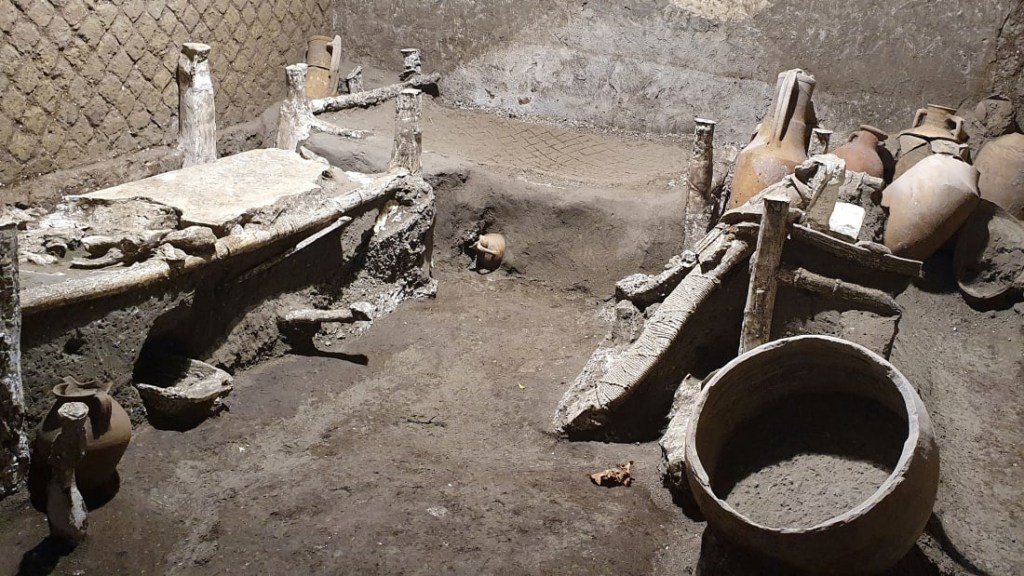Slave room unearthed in Pompeii 1:06
(CNN) -
Archaeologists have discovered a room in a villa on the outskirts of Pompeii that contains beds and other objects that shed light on the living conditions of slaves in the ancient Roman city buried by a volcanic eruption.
The room, in excellent condition, contains three wooden beds and a series of other objects such as amphorae, ceramic jugs and a potty.
Archaeologists working on the excavation.
Archaeological Park of Pompeii / AP
"This new and important discovery enriches our understanding of the daily life of the ancient Pompeians, especially of that social class about which little is still known," said Italian Culture Minister Dario Franceschini.
According to Roman law, slaves were considered property and did not have legal personality.
The "slave room" is located near where a ceremonial carriage was discovered earlier this year, near the stables of an ancient villa in Civita Giuliana, about 700 meters north of the walls of ancient Pompeii.
The excavation of an amphitheater in England unearthed the cell in which gladiators waited before their duels to the death
Above the beds, archaeologists discovered a wooden chest containing metal and cloth objects that could have been part of the horse's harnesses, while a carriage shaft was found on one of the beds.
Two of the beds were 1.7 meters long, while the third was only 1.4 meters long, indicating that the room could have been used by a small family of slaves, according to the Ministry of Culture.
advertising
The 15.9-square-meter room, with a small window at the top, also served as storage space, as eight amphorae were found tucked into the corners.
Pompeii, 22.5 kilometers southeast of Naples, was home to some 13,000 people when it was buried under ash, pumice pebbles and dust from the force of an eruption in AD 79 equivalent to several atomic bombs.
The archaeological site, which was not discovered until the 16th century, has been the subject of intense archaeological activity to curb years of decline and abandonment.
Pompeii Romans

